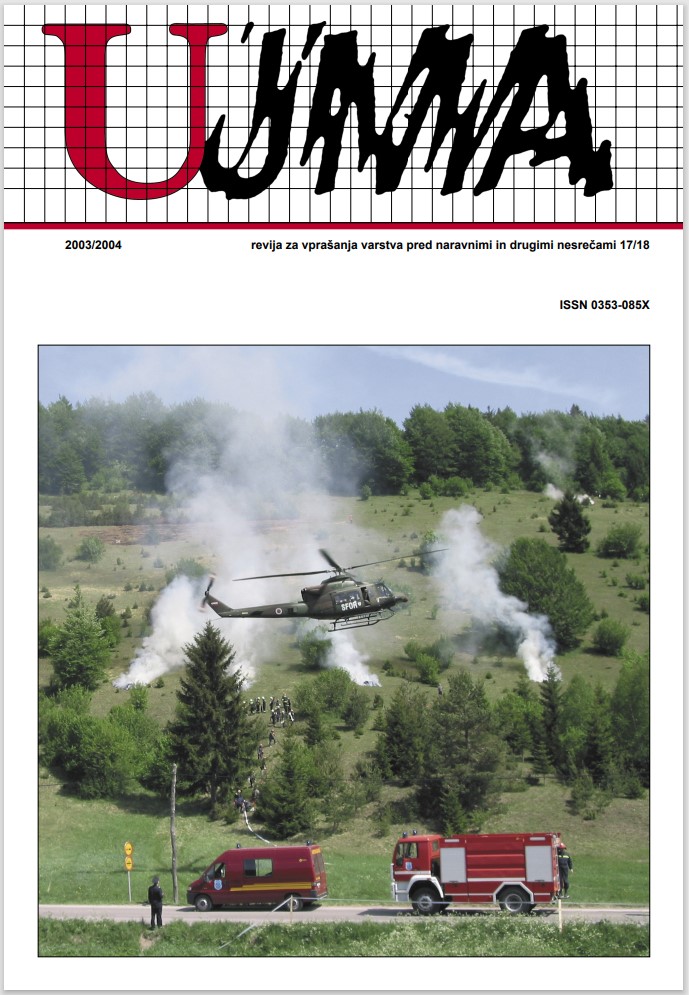INTEGRATIVE STRATEGIES TO FLOOD PREVENTION AT THE UPPER RHINE RIVER
Abstract
Floodings are natural phenomena that form part of a river landscape’s features. The accumulation of extreme flood events not only at the river Rhine (in the 1980’s and 1990’s) but also the catastrophic events at the rivers Oder (1997) and Elbe (2002), made clear that the improvement of flood prevention is one of the most important issues in Central Europe in our times. Human interferences into the river course made an economic uplift in these areas possible but have also deprived the rivers of their natural flooding areas. In the same time, it is to be expected that the global climatic change will aggravate flood risks in future. It became evident that the sought for solutions cannot concentrate on technical flood prevention measures like dykes and polders any longer but have to take into consideration all the possibilities that exist, i. e. the adaptation of utilisation in the floodplains to the need of water retention. But the sensitivity for natural landscape functions has been lost during the past decades and for a sustainable use of landscapes, there’s a strong need to bring this sensitivity back into people’s minds. Within the framework of the European INTERREG IIC-programme the German State of Rhineland Palatinate has initiated the model project “Integrated Concept of Land Use for the Flooding Area of the Hördter Rheinaue”. Its target is to elaborate sustainable land use strategies in a floodplain area with the help of integrative approaches to spatial planning in an intense dialogue with the people concerned.
References
Deutscher Verband für Wasserwirtschaft und Kulturbau e. V., 1996. Fluss und Landschaft. Ökologische Entwicklungskonzepte. Bonn.
International Commission for the Protection of the Rhine (ICPR): Action plan on flood defense/Rhine Atlas, http://www.iksr.org
Landesamt für Wasserwirtschaft Rheinland-Pfalz (ed.), 2000. Aufstellung eines integrierten Raumnutzungskonzeptes für die Planung einer Hochwasserrückhaltung in der Hördter Rheinaue. Teilprojekt 2: Heidt, V., Sabbagh, J., Leicht, B. & Krause, S.: Integrative Lösungsstrategien. (neobjavljeno).
Kern, S., Bitz, A., 1996. Zur herpetologischen Bedeutung und Gefährdung der Rheinauen. V: GNOR (ed.), 1996. Die Amphibien und Reptilien in Rheinland-Pfalz. Verbreitung, Ökologie, Gefährdung und Schutz. Band 2. Landau.
Laman, J., 1998. INTERREG Rhein-Maas Aktivitäten (IRMA) – Informationsmaterial. Den Haag. (glej tudi: www.irma-programme.org)
Ministerium für Umwelt und Forsten Rheinland-Pfalz, 1998. Hochwasserschutz am rheinland-pfälzischen Oberrhein. Ziele – Maßnahmen – Standorte (Informationsbroschüre). Mainz.
Ministerium für Umwelt und Forsten Rheinland-Pfalz, 2001. Hochwasserrückhalt. Schonende Bewirtschaftung von sensiblen Niederschlagsflächen und Bachauen. Mainz.
Ministerium für Umwelt und Verkehr Baden-Württemberg, 1997. Das Integrierte Rheinprogramm. Hochwasserschutz und Auerenaturierung am Oberrhein. Lahr.
Oppermann, B., Lutz, F., Kaule, G., 1997. Der Runde Tisch als Mittel zur Umsetzung der Landschaftsplanung. V: Bundesamt für Naturschutz (ed.), Schriftenreihe Angewandte Landschaftsökologie, 11. zvezek.
Tittizer, T., Krebs, F. (ed.), 1996. Ökosystemforschung. Der Rhein und seine Auen. Eine Bilanz. Berlin, Heidelberg.
Downloads
Published
Issue
Section
License

This work is licensed under a Creative Commons Attribution-NonCommercial-NoDerivatives 4.0 International License.
The articles are made available to the public under Creative Commons Attribution-NonCommercial-NoDerivatives 4.0 International (CC BY-NC-ND 4.0).


